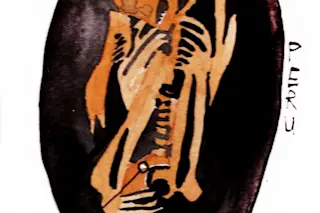We tend to think that atherosclerosis, the hardening and narrowing of arteries leading to stroke and heart attacks, is a modern condition, the result of the modern diet, smoking, and obesity. We’re often encouraged to return to traditional diets, or, to “eat like our grandmothers”, because presumably before processed foods people ate healthier. But a study released yesterday (pdf) assessed 137 mummies from different cultures and found that across vast periods of time and geographic space, ancient people also suffered from this disease, and as humans we might be more predisposed to it than we’d thought.
The researchers studied mummies from different times in four different geographical regions, including ancient Egypt, ancient Peru, Southwest America, and the Aleutian Islands in Alaska, and found that over a third of the mummies studied exhibited signs of atherosclerosis. Even where arteries had long since disintegrated with decay of the body, the calcified parts ...














